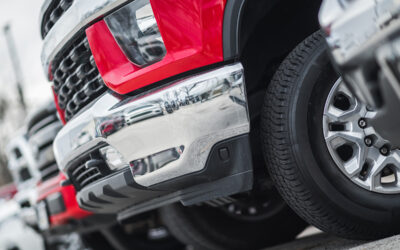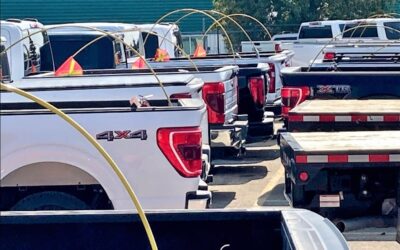Selecting the Perfect Retread Truck Tires
When refurbished tire bodies are bonded with new tread rubber, the process is called retreading. A process invented back in the 1900s, this is one of the most effective ways to make and sell high quality tires at a lower price point. The process has improved significantly over the past few years and retread tires are now quite common in the fleet industry.
Fleets of all sizes make use of refurbished tires in order to obtain good quality tires at a more reasonable cost – especially the larger fleets, which have over 1000 operational trucks. The simple fact of the matter is that retread tires are the smartest way to go. Most of the fleets employ the practice of using these tires because they offer an economical and sustainable method for business operations.
The only question is “How do you choose the perfect retread truck tires?” Here are some of the best tips that you should consider while selecting retread tires for your fleet.
What Does The Fleet Do?
The process of choosing retread tires is the same as choosing completely new tires. A lot depends on where and how the trucks in the fleet will be operating. For instance, your fleet could possibly be operating your trucks to off-road construction sites for the transportation of machinery. In such a scenario, it would be suitable to use retread tires that offer optimal resistance to chip and chunks.
When it comes to choosing retread tires, the most basic thing to remember is how they are going to be used. Your truck tires should be able to meet the needs of your fleet. The vocation of the fleet, the use of the vehicles and the conditions that the vehicles may need to drive in are all important factors to consider when choosing tires.
Understand Exactly What You’re Getting
Being aware of the process that goes into making retread tires is crucial. You should never purchase anything without knowing what it is and how it is made when it comes to meeting the needs for your fleet.
Every manufacturer has their own process, from start to finish, when it comes to how they retread tires. For instance, Bandag –a subsidiary of Bridgestone –is dedicated to retreading tires and providing the highest quality refurbished tires. Through the use of a highly advanced process called shearography, they closely examine the tires in utmost detail. Everything about the casing is uncovered to make sure that the product quality is top-notch. Once the casing has been thoroughly vetted, the tire casing goes through a 10-step process to be refurbished. It goes through inspection again before it is returned to service.
Goodyear uses advanced spliceless and laser guided technology for the retread tires that they produce, which are known as Goodyear UniCircle treads. These give tires a low rolling resistance – something favored heavily in the fleet industry. Goodyear capitalizes on the use of tread designs and compounding technology, which makes their retread tires resistant to chunking and tearing. Essentially, retread tires are as close to giving the performance of brand new tires as you can get.
Get On The Same Page With the Dealer
Having expert opinion to help you out while choosing retread tires is not only a good idea, it is strongly recommended. As a fleet manager, you should work with a dealer partner in order to develop custom retread tires, which are tailor made for the fleet that you manage.
Find the right dealer that has all the certifications and processes to ensure that you get the best possible custom retread tires. The tires should accommodate a number of different needs – the dealer should ask you questions like “Are you looking for higher mileage?” and “Will the vehicles be used on-road or off-road?”
These are the kind of questions that will help both you and the dealer to narrow down what kind of retread tire options you should consider for your fleet. The importance of the relationship between a retread dealer and fleet manager cannot be emphasized enough. It is vital for understanding what types of tires are needed, based on the needs of the fleet.
Clear Any Misconceptions
In spite of the fact that the processes involved for retread tires have seen a world of a difference from where they initially started out, many fleet operators still have their reservations about retread tires.
Small fleets, in particular, are more hesitant to use retread tires. This is mostly because of the fact that they have not really seen retread tires in action. Most of the larger fleets use retreads because they offer them a much better economic value but that is not the only reason. You see, they also see retread tires in action and have a practical observation of how effective these tires are. Their tire management program is more effective than that of smaller fleets, which operate one or two trucks.
While understanding the retreading process is a great way to learn more about retread tires, it’s better to get a practical demonstration by seeing the tires in action.
Maintenance
Just like with new tires, retread tires also require a certain amount of maintenance. As a fleet manager, just getting the tires is not enough. During the course of operations, proper inspection of the tires is a must to ensure their longevity.
Advanced retreading processes do not mean tire maintenance has gone out of the window. However, inspections are required before and after every haul in order to keep a check on the integrity of the tires. It is a vital part of every fleet’s tire management program, which cannot be overlooked.
Tire inflation is an important aspect of tire maintenance, even more so for retread tires. The right air pressure in tires gives you optimal performance, making retread tires even more cost effective as they tend to last longer.
The most wonderful thing about retread tires is the fact that they can be retreaded multiple times. If you are using premium tires that have been retreaded twice, they can last 5 times longer than the single-use ultra low cost tires – provided that they are properly inspected and maintained, of course.
*Please note: Summit Fleet only uses new tires on the vehicles it rents.






